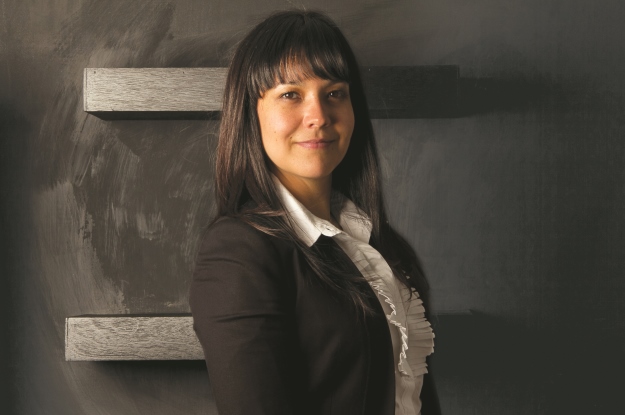This article is adapted from AQ’s print issue on entrepreneurship. To see our AQ Top 5 list of young entrepreneurs in Latin America, click here.
“You are very pretty and seem very smart, but I want to talk to the man who makes the decisions.”
Despite explaining that I was the woman who makes these decisions, as cofounder and growth director of Kichink, an e-commerce platform based in Mexico City, this older man decided to speak only to a male employee who was attending the meeting with me.
Sadly, as a woman tech entrepreneur in Mexico, I have gotten used to these kinds of sexist comments. But it’s not just comments. Women entrepreneurs throughout Latin America face various forms of gender discrimination due to a persistent culture of machismo and other barriers. But there are many things that governments and the private sector can do to help close the gender gap, and make investment and finance more accessible to all.
I struggle to prove to everyone, from investors to government officials, that I am not just a nice face to look at. It’s frustrating to have to convince them that I, too, am an essential part of my company, and not just the cofounder’s wife. To do this, I need to work extra hard to show investors that I can make the company successful, despite my age (34) or the fact that I have three young children.
As a mother, I know firsthand how hard it is to balance work and home life, especially with a newborn. Mexican women reportedly spend four hours more than men daily on unpaid work such as household duties and childcare. For an entrepreneur, family or maternity leave is often a luxury. Seventy-eight percent of high-growth Latin American women entrepreneurs are mothers, according to a 2014 study by the Multilateral Investment Fund (MIF) and Ernst & Young (EY), so companies should establish policies that work for both moms and dads to create a more inclusive, flexible work environment. This is something we’ve tried to incorporate in our own business, with a three-month paid maternity leave, after which a mother gradually rejoins the office over six months.
Yet maintaining a balance is a constant challenge. People who don’t know me might think my routine is something like: wake up at 6 a.m. every morning, practice yoga, meditate, and then start working. But there’s nothing routine about my life. Every day is different and hectic. I like to call it harmonious chaos.
The tech space in Mexico is still a very male-oriented sector. Women make up less than 30 percent of undergraduates studying science, tech, engineering and math (STEM) careers, according to 2014 education data gathered by EY. And this gender divide is common throughout the region. Only 6 percent of women in Latin America are on a STEM track, compared to 40 percent of men, according to an interview with Susana García-Robles, team leader of venture capital funds at the MIF.
After seven years of being the only woman in the room in meetings with venture capitalists and senior executives, I have learned to transform what could be viewed as a disadvantage into an opportunity. By speaking up in spite of being the lone female at the table, I try to change stereotypical gender mind-sets while making a business case for my company.
I cofounded Kichink with my husband in 2012 to create a platform for businesses to sell their goods globally, without intermediaries and borders. Motivated by our passion to have a positive impact on small business owners and develop the Mexican e-commerce market, we now serve over 50,000 small- and medium-sized enterprises throughout the region.
Now in our fifth year, we are working to scale the company through increased investment. Accessing formal financing for a startup remains a major impediment for women across Latin America. Because of this, many women use either savings (54 percent) or family and friends (16 percent) for loans, with only 15 percent turning to private banks, and just 5 percent accessing venture capital or angel investor funding, according to the MIF-EY study. While Mexico does have an incipient venture capital industry, according to García-Robles, it cannot finance all the demand.
Much more can be accomplished through supportive government programs. While the country’s entrepreneurial ecosystem is still green and underdeveloped, Startup México and other incubators have made inroads. The Mexican government is expected to spend around $600 million to fund entrepreneurial activities through 2018, following the creation of INADEM (the National Entrepreneur’s Institute) in 2013. And there has been an explosion in venture capital firms: from two funds in 2008 to 14 in 2012. Public policies such as tax breaks for budding entrepreneurs would also help women and men alike.
Additionally, there should be a stronger emphasis on supporting girls in STEM education to close the gender gap in the tech industry in Mexico and throughout Latin America. Regional accelerators like NXTP Labs, an early-stage fund for tech companies in Latin America, and initiatives like WeXchange.co, which connect high-growth women entrepreneurs with investors and mentors, will also help inspire women to become STEMpreneurs, García-Robles said.
Given how few women there are in the tech sector in Mexico, we’ve made great strides. Many of us have come together to discuss further solutions to the gender gap. But first things first: We’re all focusing on making sure our businesses thrive. And hopefully, we will keep breaking down gender barriers along the way.
—
de Heredia is a tech entrepreneur from Mexico and cofounder of Kichink.
Sarah Bons and Alana Tummino contributed reporting.



